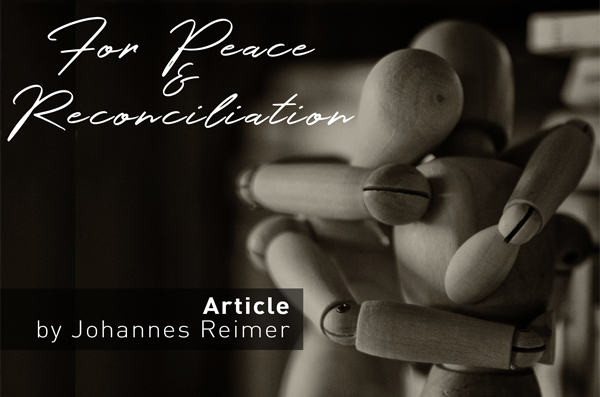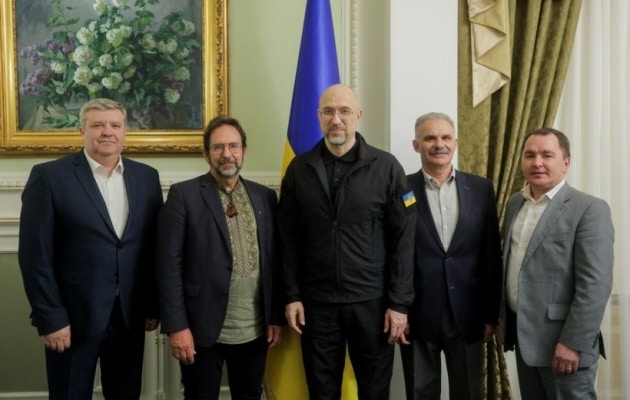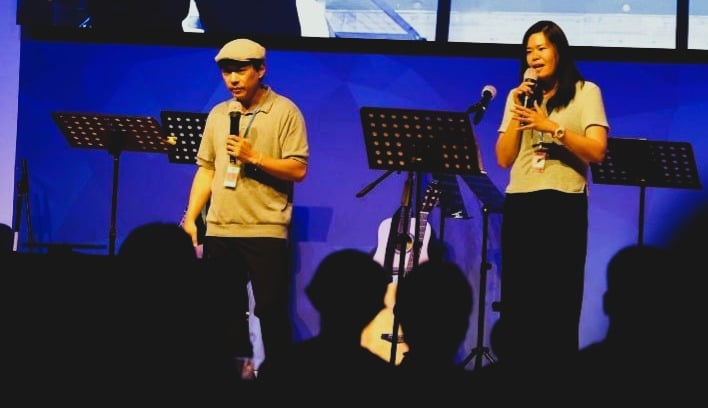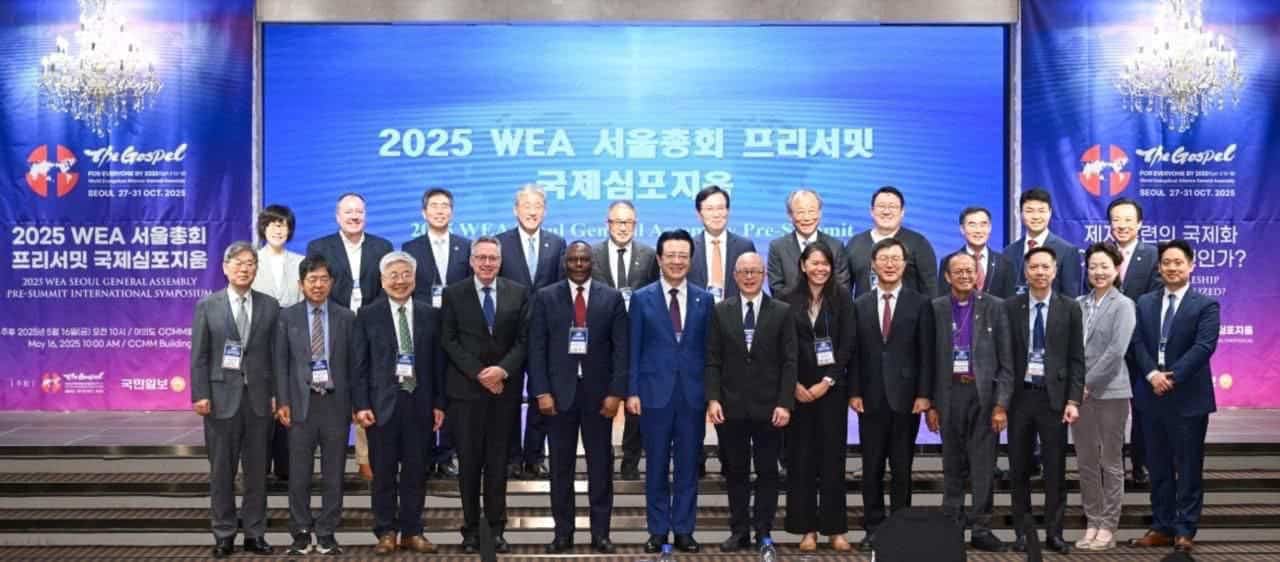By Johannes Reimer – The European Evangelical Alliance

1.Talking about peace anew
The Network for Peace and Reconciliation in the European Evangelical Alliance (EEA) has been created in 2016. Our world has become a world of conflict, “a world of war” as the American theologian John Howard Yoder once called it.[1] Motivated by the dedicated commitment of its members in many places in this world of growing and spreading peacelessness, the EEA has created an instrument to help support Christians in Europe and worldwide in their efforts for peace.
In January 2017, the international advisory board defined the vision and concept for peace and reconciliation work in the World Evangelical Alliance (WEA) at its meeting in Amsterdam/Netherlands. Grateful for every peacemaker within the worldwide movement, the Council also identified enormous gaps and even shortcomings in the understanding and practice of many national alliances on peace and reconciliation issues.[2] In many places there is a lack of theological concepts and literature on the subject. One gladly supports evangelism and the restoration of peace between man and God, but largely overlooks the social concerns of the people. Quite often one has deliberately decided to keep topics of social peace out of the message of the church, in order to form a clear antipole to the rather ecumenically minded churches and their theology.[3] The result is fatal. In the largely evangelized countries, e.g. for several years in Eastern Ukraine, it comes time and again to political upheavals, even war. Even Christians who are members of an Evangelical Alliance take part in such riots. These Christians often live in blatant ignorance of the peace mission that they also have in the world.[4]
The EEA’s “Peace & Reconciliation Network” (PRN) is intended to remedy this situation. The concept provides support for local alliances in matters of education (training), practical concepts (best case practice exchange), the organization of actions of peace and reconciliation and the like.[5] PRN is currently working on setting up training facilities, formulating foundations of theology of peace and establishing practical units in conflict zones. In this essay, the basic guidelines of this work will be presented.
2. Rediscovering the lost holistic approach
The foundation of the network was motivated by the fact that on the one hand our world is becoming increasingly peaceful, but on the other hand peace and reconciliation are not necessarily part of the mission of the members of the Evangelical Alliance. Admittedly, in the Evangelical Alliance area, people also talk about peace. In this context, peace is associated primarily with the restoration of the relationship between man and God. They talk about peace and mean evangelism.
The Church-Planting Movements (CPM) are a typical example of this. The concept is promoted in the West mainly by the Americans David Garrison[6] and David Watson.[7] They understand it as a self-multiplying church that becomes an essential instrument of evangelism through the continual planting of subsidiary churches.
Central to the CPM method is the idea of the “Person of Peace”. According to Watson, effective church planting begins through contact with a well-connected local person, through whom the local population can then be evangelistically addressed. Watson calls this person the “Person of Peace”.[8] He gets his idea from the first mission of Jesus’ disciples “to the lost sheep of the house of Israel”, as it was done by Jesus and reported by the evangelists Matthew (10, 1 ff.) and Luke (10, 1 ff.). The words in Luke 10:5-7 (Luther 2017) prove to be particularly relevant in this case:
“When you come into a house, say first: Peace be to this house! And if there is a child of peace, your peace will rest on him; if not, your peace will return to you. But in the same house abide, and eat and drink what is given to you, for a laborer is worthy of his wages. You shall not go from house to house.”
This advice of Jesus is consistently taken seriously in the church planting movements and proves to be extremely successful, for example in the Indian context.[9] The “person of peace” is seen as the key to the hearts of the local community. If the person comes to faith through the missionaries, he or she will quickly win others for the Gospel through his or her own network of relationships. Well-connected and locally located, this person understands best how to reach the people on the ground and helps the missionaries to find a contextually relevant approach. According to the main representatives, this approach is very successful. Watson writes:
“Finding the Person of Peace radically increased the number of churches we planted. We saw disciple-making teams go from planting a few churches per year to planting dozens of churches every year, and in some cases, even hundreds of new churches every year.”[10]
There is nothing wrong with this. Whoever comes to the cities and villages of his country in the name of the Prince of Peace brings peace with God to the people. However, Jesus by no means limits his mission to evangelism and church planting, which is not mentioned in the text itself. He sends his disciples to bring peace to the people. Where they are welcomed, they are to remain, proclaim the coming of the Kingdom of God, heal the sick, cleanse lepers and cast out demons (Mt 10:7-8). The peace they bring is holistic and encompasses the whole life of the local people. They are obviously concerned with the entire human being, his relationship to God, to himself and his neighbor. Just as Jesus was concerned about the whole person, even the whole of creation. He came because God loves the world (Jn 3:16). He came to reconcile the world with God (2Cor 5:18). At the beginning of His ministry Jesus preaches according to Luke 4:18-19:
“The Spirit of the Lord is upon me, because he has anointed me and sent me to preach the gospel to the poor, to preach liberty to the captives and sight to the blind, to set free those who are oppressed and to proclaim the year of the Lord’s favor.”
The apostle Paul aptly summarizes this in his letter to the Ephesians:
“For he is our peace, who has made the two one, and has broken down the fence that was between them by taking away enmity through his flesh. He has abolished the law which was written in commandments, that he might create in himself a new man out of the two and make peace, and reconcile the two with God in one body through the cross, killing the enmity through himself. And he came and proclaimed peace in the gospel to you who were far away, and peace to those who were near. For through him we both have access to the Father in one Spirit. So now you are no longer guests and strangers, but fellow citizens of the saints and members of God’s household, built on the foundation of the apostles and prophets, since Jesus Christ is the cornerstone on which the whole edifice grows together into a holy temple in the Lord. (Eph 2:14-21)
Jesus’ mission was “shalomic” in nature. He came as the Prince of Peace (Is 9:6). His coming was sung by the angels as a blessing of peace for the earth (Lk 2:14). And as he did, so did his followers: they were sent as peacemakers, as messengers of reconciliation in the world (2Cor 5:19-20), as light of the world and salt of the earth (Mt 5:13-15). The reduction of the peace mission to evangelism as the way to man’s peace with God alone is biblically and theologically questionable. What is rather needed is a holistic theology.[11]
This is a realization that seems to take root also in the circles of the Evangelicals. It becomes very clear by the development of the Lausanne movement. While back in 1974 reconciliation was still related solely to the restoration of the relationship between God and man, more recent declarations indicate the expansion. The Lausanne commitment clearly underlines “Reconciliation between people is not at the same time reconciliation with God, social action is not evangelism, political liberation is not salvation”. The Cape Town Commitment of the Lausanne movement from 2010 is quite different: “Reconciliation to God is inseparable from reconciliation to one another”.[12] The Cape Town Document clearly breaks up the one-sidedness of the Lausanne Commitment and approaches a holistic understanding of mission as an act of reconciliation.
The EEA Peace & Reconciliation Network sees its task in formulating a new holistic theology of reconciliation and peacemaking and communicating it to all churches and missions associated with the EEA. The church of Jesus must again orient itself towards the mission of God, the Missio Dei, because any reduction of the missionary mandate to the church of Jesus is not only problematic, but also endangers its existence, as David J. Bosch made clear in his groundbreaking study of missionary movements in church history.[13]
According to the network’s guidelines, six fundamental decisions mark the way to a holistic theology and practice of peace in the world:[14]
1) Evangelical peace theology and mission (Missio Pacis) is rooted in God.[15]
Whatever we say about the mission of the church must be grounded in the mission of God, “the heart of all mission”, as Samuel Escobar so aptly describes it.[16] It is God’s “proclaiming existence”.[17] And as such it exists for the reconciliation of the world with God.[18] Because God is a triune God, as Father, Son and Holy Spirit, it must turn to the triune God for a theology of peace. The Misso Dei is ultimately a Missio Trinitatis. Consequently, PRN draws the Misso Pacis from the Trinitarian theology of mission.
2) Evangelical peace theology is biblical theology. God reveals Himself in history. His revelation in the history of mankind is recorded in the biblical narrative. Theology seeks nothing less than to understand this revelation. Good Evangelical peace theology therefore gains its insights from the text of the Bible. PRN therefore turns to Scripture to understand what God’s revelation says about peace and reconciliation.
3) Evangelical peace theology is Christocentric. God reveals Himself to mankind as the God of love who seeks to preserve His creation. At no other place is his love for the world so clear as in the sending of his Son into the world.
The God of peace (Phil 4:9; 1Thess 5:23) sent him as the Prince of Peace (Is 9:6) to bring peace to the world (Lk 2:14). He is our peace (Eph 2:14), who came to teach people the way to peace (Lk 1:79). An Evangelical theology of peace is Christocentric. It refers to the life example and teaching of Jesus, knowing that in him God’s word has become an experiential reality (Jn 1:1,14). His example offers PRN a matrix for peace and reconciliation work, a template for proclaiming the gospel of peace (Eph 2:13-17; 6:15).
4) Evangelical peace theology is pneumatic. God reveals Himself in the history of the world as spirit. The Spirit of God leads the world into all truth (Jn 16:13). An evangelical theology of peace must understand and take into account the role of the Holy Spirit in the world. With his coming into the world the mission of the early church began (Acts 1:8). When the risen Jesus sent his disciples into the world, he breathed on them, gave them His Spirit and peace. A holistic theology of peace must promote practice under the guidance of the Holy Spirit. The Spirit of God is the Lord of ministry in the service of the Kingdom of God (2Cor. 3:17).
5) Evangelical peace theology reflects God’s work in the world. It translates God’s word into the language of the people in the respective context and takes into account their questions and needs. A practice-relevant peace theology will therefore have to be context-related theology, a theory of practice – in the best sense of the word – for the practice of reconciliation and peace work in the congregation and mission.
6) An evangelical peace theology focuses on the church of Jesus as an agent of peace in the world. It wants to strengthen and activate the church of Jesus and use it in the world as peacemaker. Stanley Hauerwas summarizes the statements of the New Testament very well when he writes that the disciples of Jesus should be “signs of the Kingdom of Peace in the world”.[19] They are the messengers of reconciliation (2Cor 5:19-20) called to live in peace with all people (Rom 12:18; Heb 12:14), to encourage them to live in peace with God and with one another (Acts 10:36; Rom 5:1). Reconciliation with God and neighbor is being pursued.
Within the set framework, PRN seeks to formulate a theological theory of action that shows the Evangelical Alliances worldwide a path of peace in the world of war, helps them to overcome the one-sidedness of their theology and practice and thus makes them peacemakers in their countries. For this purpose, PRN is building a network of theological educational institutes that address the issues raised and support each other in every way possible in order to offer the national alliances a basis for their peace and reconciliation work. In this way the WEA joins the church movements that have been working intensively since the 1990s on a new model of Christian mission in the world. Robert Schreiter even speaks of reconciliation work as “paradigm of mission”.[20] Together with the Lausanne Movement, most Christian denominations, the Ecumenical Movement and the Roman Catholic Church, the EEA is looking for biblical-theological foundations and an adequate theology of mission.
3. TRAIN – the framework program
The Network for Peace and Reconciliation is guided in its work by the TRAIN framework program. The abbreviation TRAIN stands for five focal points on which the work of the network is divided: T = training, R = restoration, A = assistance, I = initiatives and N = network. In concrete terms, the aim is to (a) train Evangelical congregations and missions in their respective contexts for their peace and reconciliation work, (b) to make them known worldwide with successful models and projects of restorative and transformative work, (c) to provide them with ideas and educational programs in their local work as needed, (d) to initiate programs in areas with a weak or no Evangelical presence, thus enabling the church to carry out missionary work, and (e) to interconnect corresponding initiatives in the area of the Evangelical Alliances in order to better qualify their work and make it more effective.
Since the foundation of the PRN, more than 20 educational centers in different countries have been identified as such or have been established. Up to now they offer training on an informal level. But also formal programs on different academic levels are being considered. Educational centers are planned in all countries where there is an Evangelical Alliance.
The Peace & Reconciliation Training Hub for Eastern Europe, which was held in June 2018 in Kischinau/Moldova, can serve as an example of such an informal training in peace work. Participants from 8 Eastern European countries attended the training. They were introduced to the basics of evangelical holistic mission and peace work and then trained by experts in four working groups in specific steps to take. The working groups covered the areas (a) peace and personal identity, (b) peace and reconciliation in the family, (c) peace and reconciliation in building up society, (d) peace and reconciliation among ethnics/peoples. The training was conducted by specialists from Africa, Europe and North America. As a direct result of the training, regional seminars in Ukraine, Russia, Armenia, Pakistan and Central Asia had been planned for autumn 2018 and spring 2019.
Teaching material has already been developed from the training sessions, which can be taken away by the participants.[21] It is planned to publish the material in a variety of languages in cooperation with Micah Global and Langham Publishing.
The network can also point to initial successes in the area of immediate restorative peace and reconciliation work. Initiated by PRN, centers for therapeutic work with traumatized victims of the war in Eastern Ukraine have been established in Rivne and Druzkovka/Ukraine. A basic book on reconciliation work with victims of violence has been published in Russian and Ukrainian. Several conferences and training seminars were held. Intervention teams for psychosocial and pastoral care of victims of the war are working in the country.
Admittedly, some Evangelical congregations and agencies have long been involved in peace and reconciliation work. It is important to the EEA to acknowledge their work and, where necessary, support it. Not least for this reason, the European network was founded.
A fascinating program has been created in South-East European Moldova. A small Evangelical NGO with the characteristic name of “Beginning of Life” is committed to helping victims of sexual violence and human trafficking and to other socially burning issues.[22] The art therapy developed by the staff of this organization and the course “Basic Life Skills” are approaches and instruments that have already been spread by PRN far beyond the borders of this small country. Pastors in Ukraine, Kyrgyzstan, Uzbekistan, Russia and parts of Asia work with these programs.
These are just a few examples of how good approaches in one country can stimulate developments worldwide. The declared task of the Network for Peace and Reconciliation is to offer such approaches to Evangelical Christians worldwide.
Prof. Dr. Johannes Reimer, Professor for Missiology and Intercultural Theology at the Theological University of Ewersbach and at the University of South Africa, Director of the Peace & Reconciliation Network of the World Evangelical Alliance, Theological University of Ewersbach, Jahnstraße 49-53, 35716 Dietzhoelztal, Germany; [email protected].
[1] Yoder, John Howard: He Came Preaching Peace, Eugene 1998, 17.
[2] Cf. WEA Peace & Reconciliation Network, Minutes of the International Advisory Council Meeting in Amsterdam, January 2017, PRN Archive.
[3] See Reimer, Johannes: Evangelisation und Frieden, in: Amsturz, Lukas / Jecker, Hanspeter (eds.): Fit für die Welt. Beiträge zu einer friedenskirchlichen Theologie und Gemeindepraxis, FS zum 65. Geburtstag von Bernhard Ott, Schwarzenfeld 2017, 130-141.
[4] Ibid.
[5] Cf. in detail the final document of the advisory board from its meeting in Amsterdam in January 2017: PRN/WEA Archiv.
[6] Cf. Garrison, David: Church Planting Movements, Richmond (Office of Overseas Operations International Mission Board of the Southern Baptist Convention), 2004; see also: http://www.simplechurchathome.com/PDF&PowerPoint/ChurchPlantingMovements.pdf (1.03.2020); Garrison, David: Church Planting Movements.
[7] Watson, David / Watson, Paul: Contagious Disciple Making: Leading Others on a Journey of Discovery, Nashville 2014.
[8] http://www.davidlwatson.org/2008/02/14/church-planting-essentials-find-the-person-of-peace/ (June 1, 2015).
[9] See Choudhrie, Victor: The Training of House Church Leaders, in: Nexus. The World House Church Movement Reader, ed. by Rad Zdero, Pasadena 2007, 44.
[10] Watson, David / Watson, Paul: Church Planting: Finding a Person of Peace, in: http://www. faithgateway.com/church-planting/#.WOc_chhaFE4, Dec.2014 (10.04.2017).
[11] See Kirk, J. Andrew: Mission Under Scrutinity. Confronting Current Challenges, London 2006, 133-150. The Lausanne Commitment, §5, see https://www.lausanne.org/wp-content/uploads/2011/ 06/55.pdf (20.09.2018).
[12] Rice, Chris Ed: Cape Town 2010: Reconciliation, Discipleship, Mission, and the Renewal of the Church in 21st Century, in Robert Schreiter / Knud Jørgensen (eds.): Mission as Ministry of Reconciliation (Regnum Edinburgh Centenary Series 16), Oxford 2013, 52-65, 53; Rice quotes from Cape Town Commitment IIB.1 (cf. Winterhoff, Birgit / Herbst, Michael / Harder, Ulf (eds.): From Lausanne to Cape Town. The Third Congress for World Evangelization, Neukirchen-Vluyn 2012, 255); cf. the quotation highlighted on a website of the Lausanne Movement: https://www.lausanne.org/networks/issues/reconciliation (22.10.2018).
[13] Cf. Bosch, David J.: Mission in Change. Paradigm shift in mission theology, Giessen 2012.
[14] Cf. Guide to the Development of an Integral Theology of Peace, PRN Archive, 2017.
[15] Cf. Vicedom, Georg: Missio Dei – Actio Dei, newly edited by Klaus W. Müller. With contributions by Bernd Brandl and Herwig Wagner (Edition AfeM. Mission Classics 4) Nuremberg 2002, 32.
[16] Escobar, Samuel: La Palabra – Vida de la Iglesia, Atlanta 2006, 86.
[17] Brunner, Emil: On the Misunderstanding of the Church, Stuttgart 1951, 17.
[18] Ott, Craig: Encountering Theology of Mission. Biblical Foundations, Historical Developments, and Contemporary Issues, Grand Rapids 2010, 155.
[19] Hauerwas, Stanley: The Peaceable Kingdom – A Primer in Christian Ethics, London 1984, 99.
[20] Schreiter, Robert: Reconciliation and Healing as a Paradigm for Mission, in: IRM 94 (2005), 74-83.
[21] Ubeivolc, Vladimir: Holistic Mission, Kishinew 2017; Reimer, John: Peace Building: Theology and Practice, Carliste 2019; among others
[22] See http://www.bol.md (20.09.2018).]]>





Stay Connected